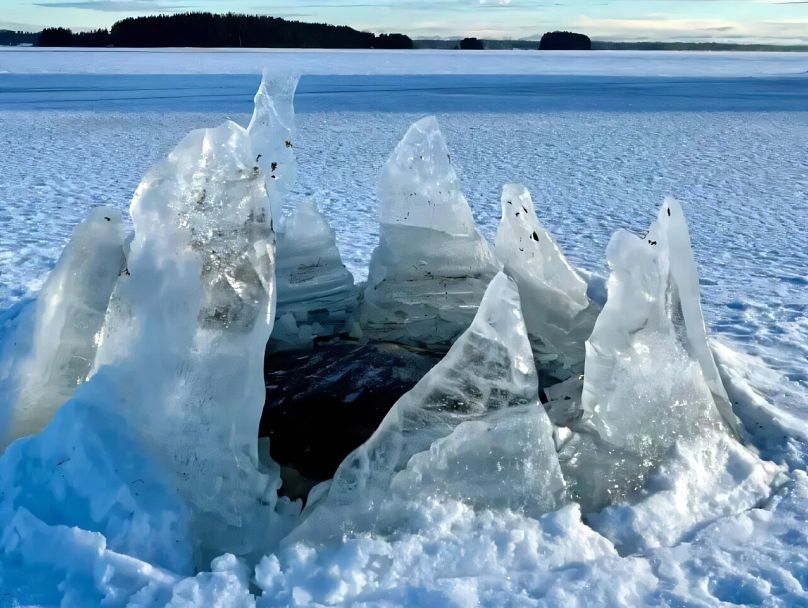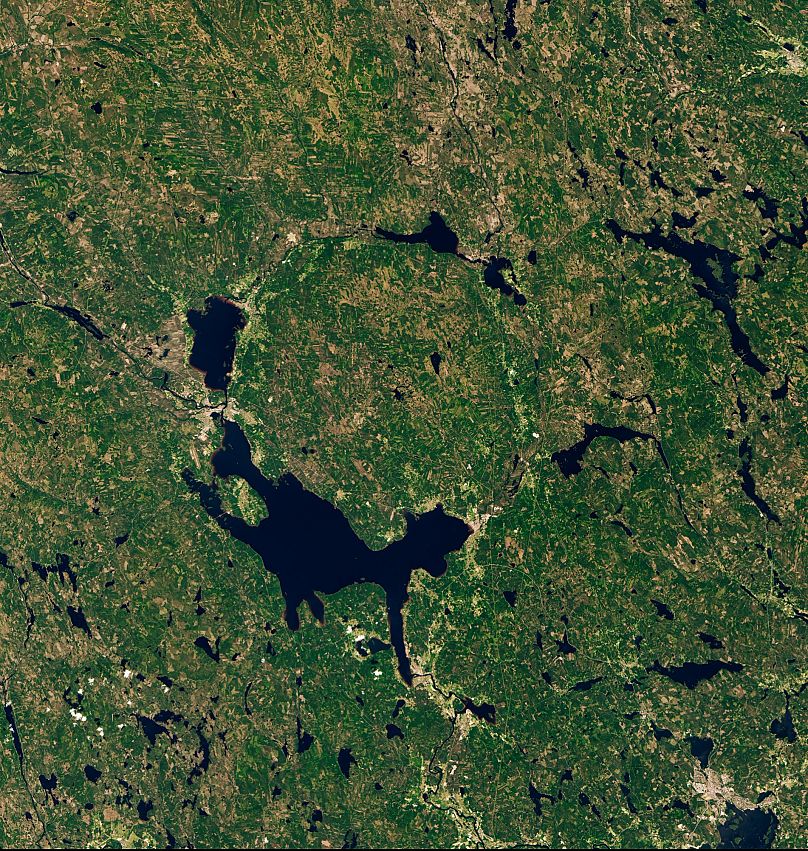
New research in Sweden has uncovered perplexingly high methane emissions coming from the largest meteorite crater in Europe.
The Siljan Ring is a prehistoric impact structure in central Sweden that measures around 52 km in diameter. There are several lakes in the region, the largest of which is Siljan on the southwestern edge.
Every winter, thick ice forms over Lake Siljan - except in a few strange, recurring spots. These open patches, known as "ice wakes," baffled locals for years. Why did they always appear in the same places? What kept these holes free of ice, even in bitter cold?
Now a new study by scientists at Sweden’s Chalmers University of Technology has found that these open spots are releasing astonishingly high levels of methane.
“The natural methane emissions from the Siljan Ring lakes appear to be far more extensive than previously known,” explains Johan Mellqvist, professor of optical remote sensing at the university. “At certain sites, we recorded emission rates up to 300 times higher than what is typically seen in lakes.”

Why are these natural methane leaks perplexing scientists?
The decay of organic matter underwater produces methane in all water bodies. What’s unusual about the situation at Siljan is the highly concentrated nature of the emissions discovered.
Usually, methane in lakes occurs as ‘bubble emissions,’ scattered leaks that pop up here and there on the surface. However, the results from Siljan suggest much stronger and localised leaks, forming detectable gas plumes in the air.
"It's unusual—and quite strange—that the emissions were so extremely localised,” says Mellqvist. “To our knowledge, this kind of tightly concentrated methane leak has never been measured in a lake before. And we've only examined a small part of the Siljan Ring lakes so far. It's possible we've only seen the tip of the iceberg."
The researchers developed a new means of detecting methane leaks, using a tracer gas to track the emissions. This allowed them to identify concentrated ‘hotspots’ in the lake, and they found two 10-metre square spots where emissions were very high, along with several other smaller sources.

They visited in 2023 and again in 2024, finding the same strong emissions both times. It suggests that this is an ongoing issue, with one site producing 3.5 tonnes of methane per year.
As methane is a potent greenhouse gas, 3.5 tonnes is equivalent to 85 tonnes of CO2. It’s the same as driving a petrol car more than 300,000 km - from Stockholm to Sydney and back five times.
Where are the methane emissions coming from?
Researchers aren’t sure where the emissions originate yet, but are working to find out.
One theory is that the source could be ‘deep gas’ from underground. This is related to the meteorite impact at Siljan, which could have carried organic matter deep into the Earth, where it continues to produce methane to this day.
If this is identified as the source, the situation could be unique to the Siljan Ring. However, if the source is found to be shallower sediment pockets, these emissions could be present in many more places.
Researchers are now planning to map a larger section of Siljan and conduct further research in other nearby lakes. Their findings could have implications far beyond Siljan in terms of how the world responds to natural gas seepage from rocks.
“If future studies reveal even larger-scale emissions, it could justify efforts to reduce them," says Mellqvist.
If this kind of leakage is happening in other lakes, too, it points to an underestimation of how much methane is coming from natural sources. As the climate crisis intensifies, understanding—and possibly mitigating—natural methane sources like Siljan could be more important than ever.







